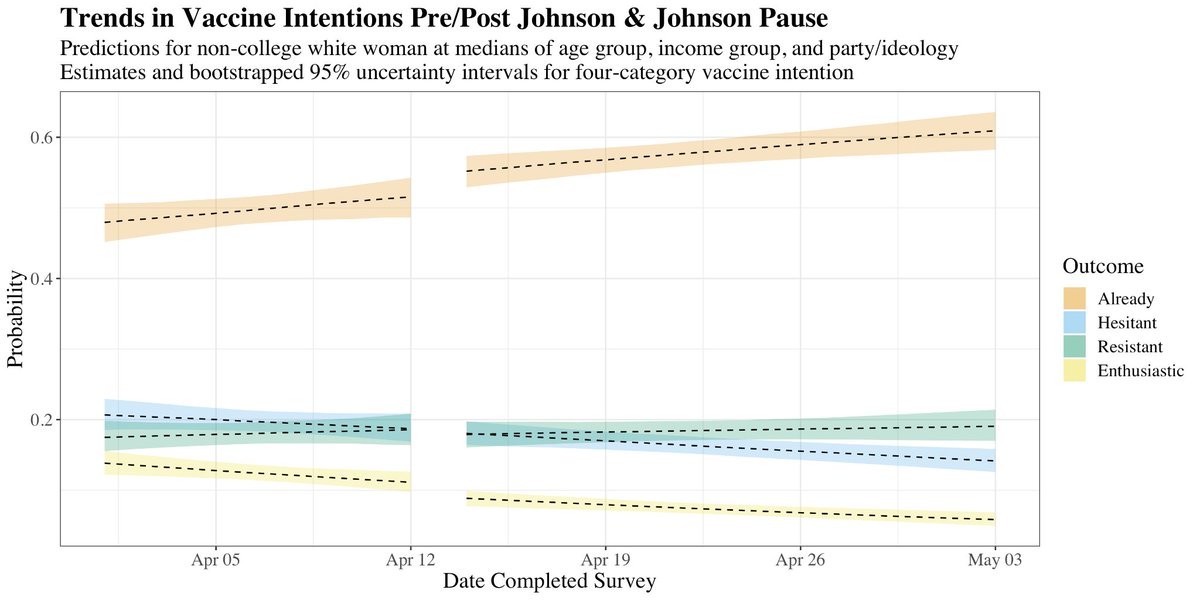
Did the J&J pause reduce demand for vaccinations, as some have asserted? (cough @NateSilver538 cough)
Our latest COVIDstates.org report evaluates this question, based on a large (20k) survey we had in the field the entire month of April.
Our latest COVIDstates.org report evaluates this question, based on a large (20k) survey we had in the field the entire month of April.

The scale of the survey, and the rapid change of vax sentiment/status through April give us a pretty good look at dynamics down to the daily granularity. & the pretty clear answer, despite very high awareness, is that the impact of the pause on vax demand was: BUBKES.
What we see is a steady increase in the number of vaccinated people, & a steady decrease in vaccine enthusiastic and hesitant individuals. Vax resistance is quite steady.
So: J&J did present a short term supply shock, likely modestly slowing vax rates for a week or two? But the peak shots/day was always going to be in April, as we exhausted the easy to vaccinate enthusiasts.
This does not speak to other possible downsides of the pause (e.g., has J&J vaccine been undermined in the US & elsewhere?); nor upsides (has this enhanced trust of the regulatory/safety process?). But: there is no evidence that the pause caused a drop in demand.
W/
@Ognyanova
@_Jon_Green
@matthewabaum
@royperlis
@AdinaGitomer
@mattysimonson
@MauSantillana
@jennifer_lin16
@Atauslu
Alexi Quintana & Jamie Druckman
cc @Northeastern @RutgersU @NorthwesternU @Harvard @ShorensteinCtr @NUlabTMN
@Ognyanova
@_Jon_Green
@matthewabaum
@royperlis
@AdinaGitomer
@mattysimonson
@MauSantillana
@jennifer_lin16
@Atauslu
Alexi Quintana & Jamie Druckman
cc @Northeastern @RutgersU @NorthwesternU @Harvard @ShorensteinCtr @NUlabTMN
• • •
Missing some Tweet in this thread? You can try to
force a refresh









